Quake Video Game Series
A series of first-person shooters (FPS), created by id Software studio as an extension of ideas from the games Doom and Doom II. The series has gained recognition among gamers primarily for its outstanding visuals and extensive multiplayer mode.
Roots of the Quake series date back to the second half of the 1990s. After the success of the first games of the Doom series, id Software focused on the next project, which was to utilize the potential of a new engine that generates three-dimensional graphics in real time. Among the developers involved in working on it were John Cormack, Michael Abrash, American McGee and John Romero.
The first Quake debuted in 1996 on personal computers. Despite only a vaguely outlined storyline, the production delighted players with its standard-setting visuals and extensive multiplayer mode. The second installment of the series, Quake II, appeared just a year later and repeated the success of the first game. Fans had to wait for the release of Quake III: Arena Arena two years - the game debuted in 1999. Quake IV was released six years later, in 2005.
The following years were marked by a number of side projects for the franchise - games like Enemy Territory: Quake Wars (2007), Quake Live (2010) or Quake Arena Arcade (2010). The biggest of these was the free-to-play game Quake Champions, the full version of which appeared in 2022. Meanwhile, in 2021, there was a remastered edition of the first game in the series, released for PC and consoles. A year later, we got a remaster of the second game.
Games in the Quake series do not have a consistent story line. In its assumptions, the plot of the first installment of the series resembles Doom. Players take on the role of a soldier traveling between dimensions with the task of destroying the monsters that inhabit them. In Quake II the main theme is the attack on the planet of aliens - the Stroggs, who threaten Earth. The war with aliens continues in Quake IV. Quake III: Arena is set in a gladiatorial arena built by the ancient race called Vadrigar. Common elements of the games in the Quake series are primarily the first-person perspective (FPP) view, dynamic combat using mainly ranged weapons, and an extensive multiplayer modes via the Internet or LAN.
From the very beginning, the Quake series attracted attention with high-quality visuals, thanks to the extremely modern, for its time, Quake Engine, which allows real-time 3D rendering. Its subsequent generations, renamed id Tech, are still used today in games created by id Software studio.
Quake Series Evolution
2023
Quake II
2022
Quake Champions
2021
Quake
2010
Quake Arena Arcade
2009
Quake Live
2007
Enemy Territory: Quake Wars
2005
Quake 4
1999
Quake III: Arena
1997
Quake II (1997)
1996
Quake (1996)
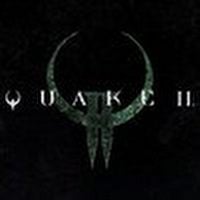
Quake II
August 10, 2023
Action, FPP, FPS, Internet, Co-op, Multiplayer, For 2 Players, Splitscreen, Remaster/remake, Science Fiction, Singleplayer, Shooters, Xbox Game Pass Premium, Xbox Game Pass Ultimate, PC Game Pass.
A remastered version of an iconic FPS, featuring new content. Quake II includes the base game and three expansions - The Reckoning, Ground Zero and the brand-new Call of the Machine.
OpenCritic
Users
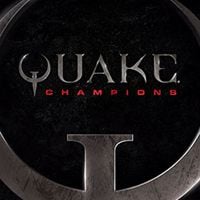
Quake Champions
August 18, 2022
Action, FPP, FPS, Internet, Multiplayer, Science Fiction, Online, Shooters, Free-to-play.
Another installment of the legendary series of first-person shooters developed by id Software. The series became very popular mostly thanks to its great and well-balanced multiplayer modes. Quake Champions concentrates on that aspect of the gameplay and lacks a classic campaign mode. Instead, it features dynamic gameplay for many players. The matches are played in a few varied PvP modes. One of the biggest and most controversial new features is allowing the players to control one of many completely different characters with unique special abilities. This lets the players choose a character whose fighting style fits their preferences. The developers made sure that abilities of some characters won’t give anyone unfair advantage during the matches and that the outcome of rounds – similarly as in previous installments of the series – depends only on skills of the players.
Steam
Users
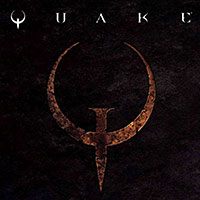
Quake
August 19, 2021
Action, Fantasy, FPP, FPS, Internet, Multiplayer, Splitscreen, Remaster/remake, Online, Singleplayer, Shooters, Xbox Game Pass Premium, Xbox Game Pass Ultimate, PC Game Pass.
Remastered version of the cult shooter from id Software studio. Quake Remastered offers both the story campaign and multiplayer mode. The game stands out from the original thanks to refreshed graphics.
OpenCritic
Users
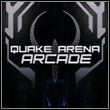
Quake Arena Arcade
December 15, 2010
Action, FPP, FPS, Internet, Multiplayer, Science Fiction, Singleplayer, Shooters, Xbox Exclusive.
A re-edition of the popular PC first-person shooter Quake III: Arena (with the expansion pack Team Arena) developed by Pi Studios for Xbox 360. The general gameplay premise remained unchanged in comparison to the original game and the title concentrates mostly on dynamical multiplayer skirmishes played on one of more than 40 available arenas, most of which were taken from the third installment of the series. The battles can be played in a few standard game modes and the arsenal of available weapons consists mostly of equipment that is well known to the fans of the series created by id Software. The main difference in comparison to the original game is the adaptation of gameplay mechanics to the consoles, for example by adding various facilitations.
Users
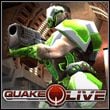
Quake Live
February 24, 2009
Action, FPP, FPS, Internet, Co-op, Multiplayer, Online, Shooters.
A free-to-play installment of the popular series of first-person shooters developed by id Software. The title is a modified version of the third installment and the Team Arena expansion. The title focuses mostly on multiplayer competitions played in one of the standard game modes on maps that are well known to the fans of the series. Quake Live was developed for players of various skills and the basic aspect that makes it different from the third installment of the series is the increased focus on social aspects. This can be noticed on the dedicated website through the option to create friend lists, advanced online statistics and various tournaments with valuable rewards. The game is distributed for free, but the users are forced to watch commercials implemented into the game by IGA Worldwide.
Steam
Users
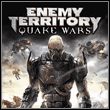
Enemy Territory: Quake Wars
September 28, 2007
Action, FPP, Internet, Multiplayer, Science Fiction, Shooters.
An online first-person shooter that combines the universe of the cult Quake series with the gameplay mechanics of the free modification to Return to Castle Wolfenstein entitled enemy Territory. It was developed by Splash Damage in cooperation with if Software. The action takes place in 2065 after the merciless Strogg land on Earth with the aim of obliterating its inhabitants. An elite commando unit called Global Defense Force takes up arms to defend the planet, while the players can side with either faction. Despite the fact that Enemy Territory: Quake Wars concentrates solely on multiplayer, it features over a dozen missions in which players complete predetermined goals that involve defense of key strategic points or frontal assaults on enemy bases, among other things. The gameplay is focused on cooperation within a team. Each participant represents one of five different character classes and has a unique role to play.
Users
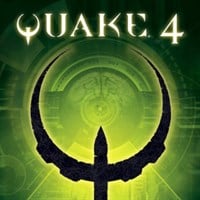
Quake 4
October 18, 2005
Action, FPP, FPS, Internet, LAN, Multiplayer, Science Fiction, Singleplayer, Shooters, Xbox Game Pass Ultimate, PC Game Pass.
The fourth major installment in the cult FPS series developed by Raven Software under strict supervision of id Software. Contrary to its predecessor, Quake 4 features an extensive single player mode, the action of which takes place right after the events of Quake II. The defeat of the Strogg leader, Macron, did not seal the fate of the hostile alien race, for it managed to regroup and bring a new, even more dangerous leader to life. Faced with the threat, a special commando group was sent to deal with the enemy once and for all. Mechanics-wise, the title offers a typical dose of action, although there are some simple story quests to be performed as well. Enemy character models and weapon arsenal were not drastically changed. What is new is that the protagonist, as a result of medical experiments, came into possession of special implants that let him wreak even greater havoc.
Steam
Users
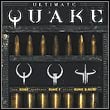
Ultimate Quake
November 10, 2001
Action, Fantasy, FPP, FPS, Internet, Co-op, LAN, Multiplayer, Science Fiction, Singleplayer, Shooters.
A special set of the first three installments in the cult series of first-person shooters, Quake, that were developed by id Software. The collection was published by Activision and it contains Quake and Quake II, games that were released in years 1996-1997 and which codified the standards of their genre, both when it comes to graphics and to very advanced multiplayer modes. The collection is supplemented by Quake III: Arena from 1999, which, in contrast to its two predecessors, concentrates only on multiplayer mode (it has a very limited single player mode based on bot matches).
Users
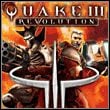
Quake III: Revolution
March 26, 2001
Action, FPP, FPS, Co-op, Multiplayer, Splitscreen, Science Fiction, Singleplayer, Shooters, PlayStation Exclusive.
The first console installment of the very popular FPS series. The title combines the traits of the basic edition of Quake III: Arena with the novelties implemented in the Team Arena expansion. Similarly as its PC archetype, Quake III: Revolution concentrates mostly on its six multiplayer modes, which allow up to four players to play simultaneously on a split screen. Thirty partially original maps and twelve weapons are available in the game. Similarly as in case of the PC original, the game contains a single player campaign which enables the player to face bots controlled by the artificial intelligence. In this mode the player can train their character and polish their skills – completing challenges increases the character's abilities and makes it stronger in confrontation with more powerful enemies.
Users
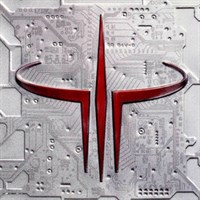
Quake III: Arena
December 3, 1999
Action, FPP, FPS, Internet, Co-op, LAN, Multiplayer, Science Fiction, Singleplayer, Shooters, Xbox Game Pass Ultimate, PC Game Pass.
The third installment of a bestselling series by id Software, and one of the most important titles when it comes to multiplayer FPP shooters. The greatest novelty introduced by Quake III: Arena is the fact that after two previous installments of the series, intended to be played both in multi-, and single player modes, the developers decided to focus exclusively on the multiplayer aspect of the game. Thus, the basic form of gameplay here are skirmishes between two teams, governed by a set of clearly-defined rules. Although Quake III: Arena contains a single player mode, it is based only on skirmishes with AI-controlled bots, and can be treated as training before the actual multiplayer gameplay.
Steam
Users
Expansion Packs:
- Quake III: Team Arena December 15, 2000
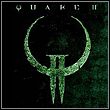
Quake II (1997)
December 7, 1997
Action, FPP, FPS, Xbox Game Pass Ultimate, Internet, LAN, Multiplayer, Splitscreen, Science Fiction, Singleplayer, Shooters.
The sequel to the groundbreaking first-person shooter by id Software that, just like its predecessor released the year before, set new visual standards thanks to the enhanced idTech 2 engine. The action of Quake II takes place in the distant future where humanity established contact with a biomechanical race of the technologically advanced Stroggs. When it turned out that the alien secretly plan to conquer Earth, a special space marine unit was sent into action. They were completely crushed, though, and the player assumes the role of the sole survivor on whom the further fate of the humanity depends. Compared to the original, Quake II is characterized by a significantly richer plot and modified weapon arsenal. The levels were also greatly expanded, following different stylistics than in the previous game. Multiplayer remains the title’s strength. In Quake II, up to 16 players can play in several varied game modes.
Steam
Users
Expansion Packs:
- Quake II: The Reckoning May 31, 1998
- Quake II: Ground Zero August 31, 1998
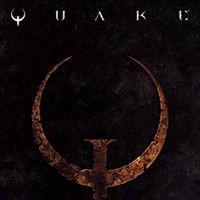
Quake (1996)
June 22, 1996
Action, Fantasy, FPP, FPS, Internet, LAN, Multiplayer, Science Fiction, Singleplayer, Shooters.
A first-person shooter developed by id Software, which established new standards in the genre while being a breakthrough in terms of 3D computer graphics. The action of Quake takes place in an undefined future where government experiments with teleportation has made contact with inhabitants of other dimensions, bringing about an infestation of hellish beasts. During the gameplay, we assume the role of a nameless hero who, as humanity’s last hope, travels between the dimensions trying to deal with the danger. During the game, we explore various, climatic locations, wreaking havoc using eight weapons types. Our task is to gather the runes that unlock access to the last dimension, home to the final boss - Shub-Niggurath. One of the biggest highlights of the game is an expanded multiplayer mode offering the ability to play in several different modes, designed for up to 16 players.
Steam
Users
Expansion Packs:
- Quake Mission Pack No. 1: Scourge of Armagon February 28, 1997
- Quake Mission Pack No. 2: Dissolution of Eternity March 31, 1997
Quake Series News
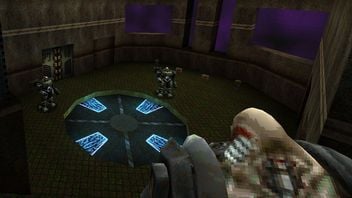
Unique version of Quake 2 from PSX made its way to PC
A Quake II PSX mod has been released. It reproduces on the PC maps from the heavily different edition of this FPS developed for the first PlayStation.
Files and Mods
January 6, 2025

SPRAWL 96 brings the mechanics of Steam's revered FPS to classic Quake
The developers of the highly-acclaimed boomer shooter SPRAWL have developed their own modification to the first installment of the Quake series, porting mechanisms from their game to it.
Files and Mods
August 27, 2024
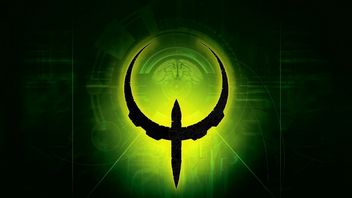
Quake 6 May Be in Production. Xbox Easter Egg Sparks Hope for Big Return
A hidden reference to the cult Quake series has been found in game footage from Indiana Jones and the Great Circle. It may suggest that Quake 6 is in production.
video games
January 20, 2024
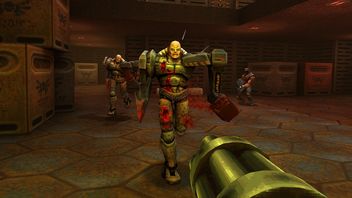
Quake 2 Got a Remaster and Its Prequel a Free DLC
A remaster of Quake 2 has gone on sale, plus Bethesda has released new free content for the refreshed Quake 1 and announced a contest in which a Steam Deck is up for grabs.
video games
August 11, 2023

Quake 2 Got a Remaster and Its Prequel a Free DLC
A remaster of Quake 2 has gone on sale, plus Bethesda has released new free content for the refreshed Quake 1 and announced a contest in which a Steam Deck is up for grabs.
video games
August 11, 2023

Quake 2 Got a Remaster and Its Prequel a Free DLC
A remaster of Quake 2 has gone on sale, plus Bethesda has released new free content for the refreshed Quake 1 and announced a contest in which a Steam Deck is up for grabs.
video games
August 11, 2023
![Groundbreaking FPS Quake 2 Will Get a Remaster [Update]](https://cdn.gracza.pl/i_gp/h/16/428834875.jpg)
Groundbreaking FPS Quake 2 Will Get a Remaster [Update]
Credible rumors have surfaced online, according to which a refreshed version of Quake 2 will be announced in a week.
video games
August 10, 2023
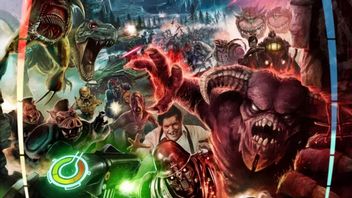
Fathers of Iconic FPS Will Reveal Their Secrets but Not for Free
A trailer for a new documentary film entitled „FPS: First Person Shooter.” It is a work that will show the history of the first-person shooter genre.
video games
July 7, 2023
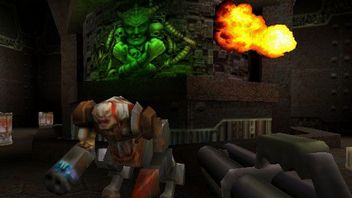
id Software May be Preparing to Announce Refreshed Quake 2
It looks like the second part of Quake will follow in the footsteps of its predecessor and receive a remastered version. It can be speculated that we will see the announcement of Quake II Remastered at August's QuakeCon.
video games
June 23, 2023

id Software May be Preparing to Announce Refreshed Quake 2
It looks like the second part of Quake will follow in the footsteps of its predecessor and receive a remastered version. It can be speculated that we will see the announcement of Quake II Remastered at August's QuakeCon.
video games
June 23, 2023